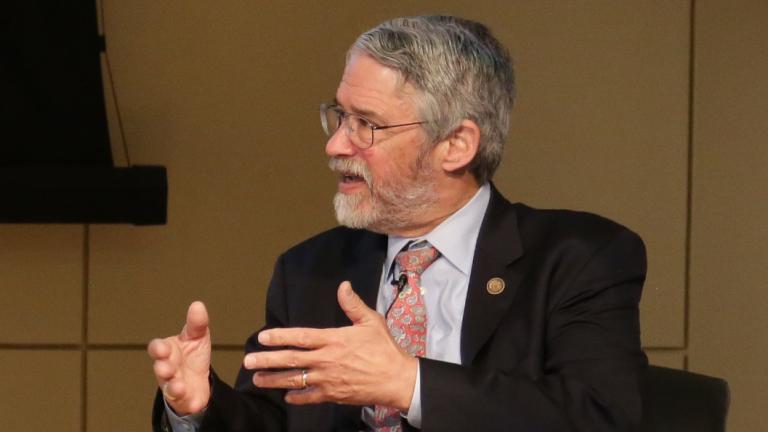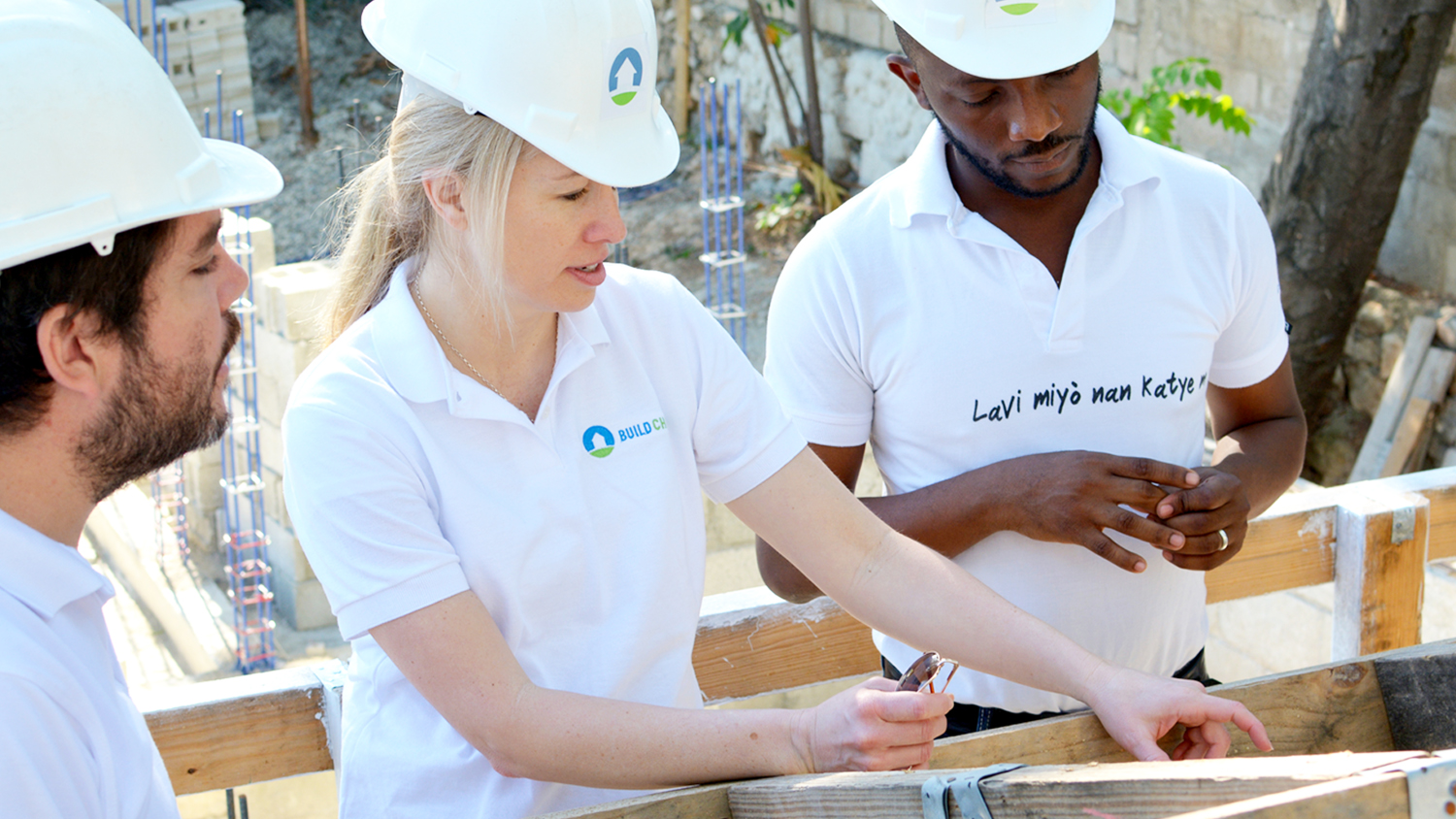Concrete might as well be part of Elizabeth Hausler Strand’s blood.
Alongside her father, a masonry company owner, she spent her high school and college summer breaks in Chicago learning how to build houses. Then, in 2004, she founded Build Change, a nonprofit that retrofits and builds permanent housing in the wake of natural disasters. She was inspired to start the organization while finishing up a civil engineering masters program at the University of California Berkeley — after seeing the devastation that followed a 7.7 magnitude earthquake in Gujarat, India, which killed more than 20,000 people.
“I look at housing as a basic human right — everyone has the right to a safe house that can protect them from natural disasters [including] earthquakes, typhoons, and wind storms,” she says. “I felt that is an engineering challenge that I could help to solve.”
Hausler Strand launched Build Change’s first project in Indonesia after the Indian Ocean tsunami leveled the northern part of the country in 2005. Ten years later, the organization still has a hub in the Southeast Asian nation and has since started projects in Colombia, Guatemala, Haiti, the Philippines, and, most recently, Nepal. In these communities, the organization partners with homeowners and local construction workers to teach safer building standards. Homeowners continue to receive grant money and technical assistance from Build Change as long as their home is constructed in compliance with the organization’s safety standards.
In the coming years Hausler Strand is going to be busy, sadly. Thanks to climate change, extreme weather events such as hurricanes and typhoons — and even tsunamis and earthquakes — are occurring more frequently. And underdeveloped countries are likely to be hit hardest by these natural disasters.
After 10-plus years of bringing in (literal) reinforcements, Hausler Strand spoke to us about what she’s learned.
Building trust is as important as building houses.
Hausler Strand says that fostering peace of mind is an important part of any rebuilding process. “We don’t want to create an environment that causes more trauma,” she says. “People are already [traumatized] and so the last thing we want to do is add to that by building a house for them that they don’t trust.” To that end, Build Change involves homeowners and community members in the construction process. “When we empower people to make their own decisions, then we see them really owning the process and investing their own funds and prioritize building safely.”
Relocation is hard — but sometimes necessary.
“In the Philippines, we are working to get people out of storm surge areas,” she says. “There are people arguing that the typhoons are becoming more common and stronger because of climate change, so I think there’s a lot of desire to get people out of [those] areas.” Build Change tries to be thoughtful and strategic about where to relocate people. “We are working to relocate some folks out of the storm surge area to an area very close to where they used to live, so we don’t disrupt their social networks, incomes, jobs, and their community.”
Transitional housing is not an adequate replacement for permanent housing.
As funding dwindles post-disaster, survivors are at risk of having emergency shelters turn into permanent housing. And while temporary shelters are critical in the aftermath, they are not a long-term or sustainable solution.
“We advocate against transitional shelters,” she says. “The people and the governments we’ve worked with [prefer] to move toward permanent solutions because money is limited. The donor community doesn’t have enough funding to build someone a temporary house and then come back later to build a permanent house. There isn’t enough money around to build someone a house twice.”
Sometimes, simple solutions go a long way.
Says Hausler Strand: “For masonry [buildings], they can perform well in an earthquake or be very dangerous. One of the things we do if we’re dealing with a simple building is we put a ring beam, which is basically a reinforced concrete beam along the top of the walls, [which] connects all of the walls. If we can just do that, it makes a big difference.”
Making changes doesn’t have to mean importing construction materials from abroad, either. Her organization is able to build more sustainably by using locally available materials, including sand, gravel, rebar, and even reusing materials from fallen buildings.
Schools need lovin’, too.
After celebrating Build Change’s 10th anniversary, Hausler Strand helped launch the organization’s 10-in-10 initiative, which aims to provide 10 million people with safer houses and schools over the next 10 years. In the past, the nonprofit mostly focused on personal homes. But ahead, the organization will also work with communities to build safer schools.
Precautionary measures are also a part of Hausler Strand’s long-term strategy. “As we look at our next 10 years, I would love for us to spend the most time on prevention — working with people to strengthen the buildings before an earthquake or typhoon.”




